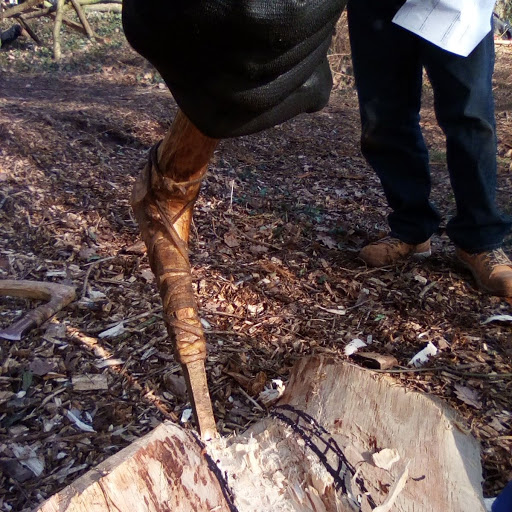11th – 15th February 2019
Phase 1 Construction Week
Work begins in earnest this week!
The weather looks settled – at least for now, so we are taking advantage of less mud and rain to organise the 14 post holes ready for fitting our structural posts in the ground over the next three project weeks.
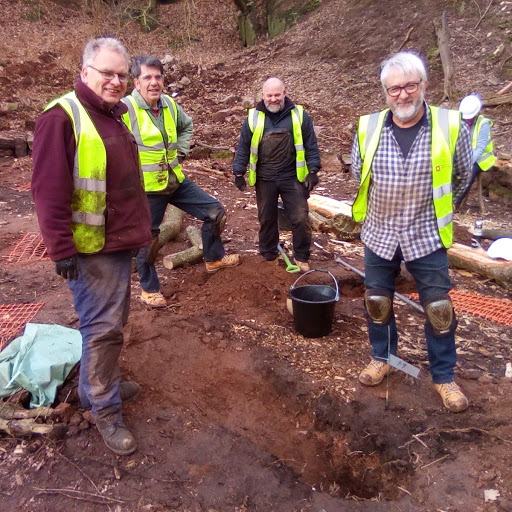
Each hole is being cleared of debris and widened to accommodate the timbers we have available. Some of the post holes come down onto quarried bedrock at 600mm below surface, but where possible we are digging further to around 1000mm. This should provide ample cantilevering to the earthbound posts once the excavated soil is tamped back in thin layers around the foot of each post.
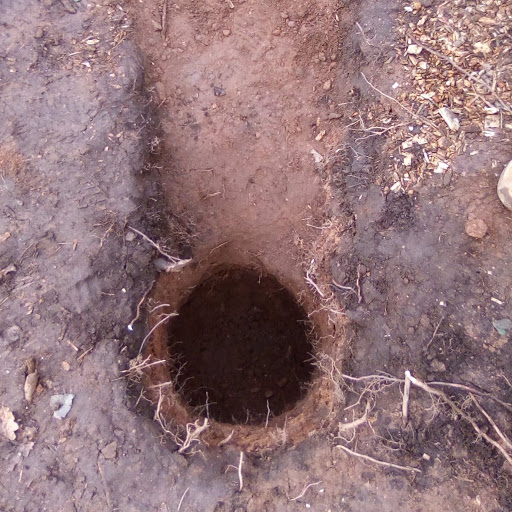
We begin the careful matching of available posts to available wall plates. The wall plates will run horizontally across the post tops to link them structurally. Eventually, the wall plates will form a continuous ring of timbers that will prevent the walls from spreading under the load of the roof. The joining of each wall plate to a pair (or more) of post tops can be achieved in a number of ways and, depending on the specific timber sizes we have to work with, we will try several of these methods to construct the ring.
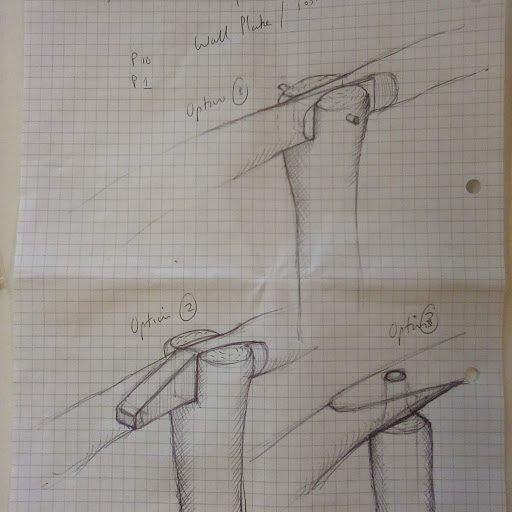
The volunteers are now well into the routine of working the timbers. Bronze and steel tools are at work and the sound of sharp edges fills the woodland at the quarry site. We take for granted how the woods have changed over the last millennia. Modern managed woodland tends to scream with the high pitched wail of chainsaws and large machinery. The woodlands of our ancestors were more melodious in their management and we have all commented on the difference. Conversation and birdsong can be heard during our work and yesterday, we paused in our efforts to listen to a woodpecker tapping out its message on a nearby tree.
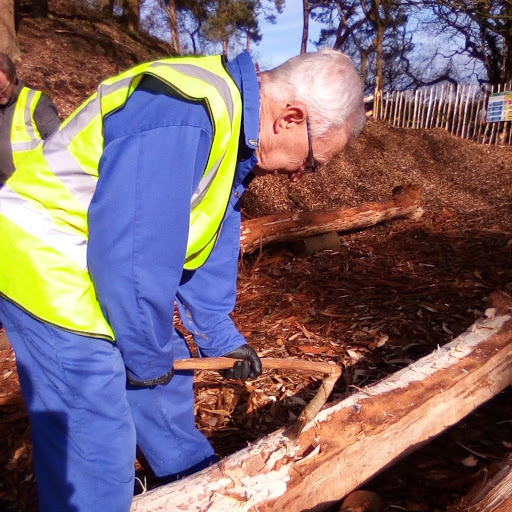
Alongside this traditional noise is the inevitable need for hard work at generally mundane tasks, but the unobtrusive noise of traditional tools at least enable time and space for thought and friendships while the work continues.
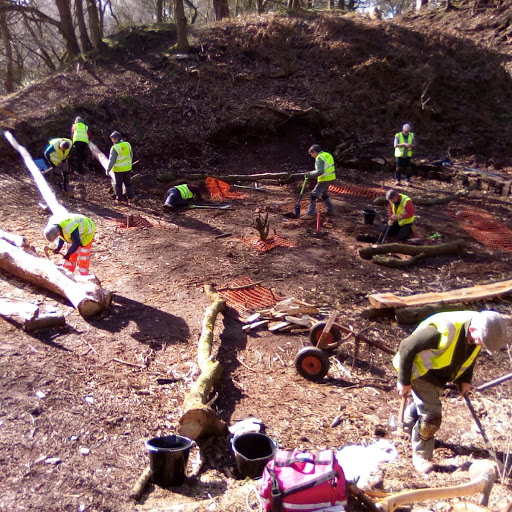
The volunteers have also cut in ramps to locate the base of each post during raising. The site is suddenly looking like a real construction zone!
New bronze tools have also been hafted using branches selected from the woods and prepared with notches to house each tool head. The heads are then attached to the haft using rawhide strips that are applied wet and then dried to form a shrink wrapped binding. All of these tools will be well used during this project and it will be interesting to see what issues we face as Bronze Age workers.

Experiment 2 is underway to see what effort and time is required to cut a deep mortise into the top of one of the three central posts. The post top will locate two of the purlins that form the rafter supporting triangle of timbers at the top of the roof.
